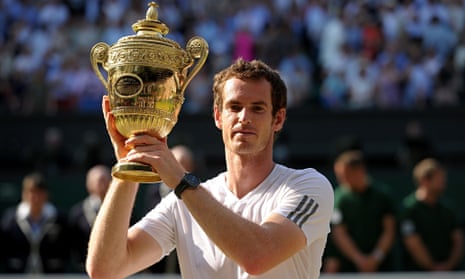In the most devastating critique on British tennis in a decade, Michael Downey, who has been the chief executive of the Lawn Tennis Association for just over a year, admitted on Tuesday the game in Britain is in decline. Coming from the very top, it is a brutal, honest assessment – in stark contrast to years of denial bordering on complacency by previous administrations.
The Canadian, who did much to restore the game’s fortunes in his own country before replacing Roger Draper in January, 2014, says he has a plan he hopes will arrest the slide over the next four years – and he must be hoping it will repair the long-term damage inflicted by a top-down strategy of subsidies and cosseting of under-performing players before the eventual departure of Andy Murray, Britain’s only truly world-class player. Although he wishes it were not so, that will be Downey’s legacy: success or failure, the ultimate bottom line.
“The fundamental problem that we face … is that our sport is declining,” Downey said in a candid and illuminating interview at the National Tennis Centre in Roehampton, now an echoing administrative hub rather than the centralised home of excellence it once was. The pared-down surroundings in south-west London reflect Downey’s mantra: “Spend money like it’s your own.”
He added: “That’s a fact a lot of people have trouble accepting but the reality is the truth. We had nearly a million monthly players back in 2008-2009, and this year we had 694,000. On the weekly side, we’ve gone from 530,000 in 2008-09 down to 384,000. So it’s tough for us to say our sport is growing. It is not growing.”
He painted a grim, familiar picture of a pleasant summer pastime still rooted in a suburban comfort zone, with middle-aged men and women enjoying their friendly tennis in the nation’s 2,700 clubs, where the average age is 45-plus and the exertion of choice is a gentle game of doubles. And if the good of the game is not enough to stir them on Acacia Avenue, annual balance sheets might be. “They know they need new members,” Downey said. “They want to attract a younger membership.” And it is among teenagers where the numbers are falling most worryingly.
Downey’s strategy is a simple one: build from the bottom. “We think the growth is going to be in the parks. We need to strike long-term agreements with local authorities.” From there, he hopes the game will grow in schools and clubs and, ultimately, on the lawns of Wimbledon – even if, though steeped in marketing, he remains resistent to removing the anachronistic “Lawn” from the name of the governing body, more than likely a compromise made with the still influential club and county members of the LTA.
Delivering an iron fist in a velvet glove to the chin of former regimes, Downey made his message obvious enough. “No disrespect but I think the old LTA would have driven past the parks straight on to the clubs. I looked at the old blueprint. It was all about high performance. This is about meat and potatoes.” Downey never again wants British tennis to visit an era where the adopted Serb Alex Bogdanovic, a decent but ultimately underachieving player, was granted eight Wimbledon wild cards in a row and went out in the first round each time. When I put it to him that British tennis might profit from looking at Cuban amateur boxing – where their champion boxers are re-employed as expert tutors before they reach redundancy as competitors – Downey agreed. Persuading players who love competing, although they are unable to crack the top 200, to trade their globe-trotting for a coaching certificate might be another challenge altogether, though.
Goodwill and effort abound, nonetheless. On Thursday at the Broadway Academy in Perry Barr, Birmingham, Judy Murray launches a Tennis Foundation initiative described as, “a new vision to use tennis for social change”. The LTA sees the programme as a way of reaching young people who otherwise would probably never experience the sport – and no doubt pupils meeting someone they might have seen dancing on television and who happens to be the mother of Britain’s best player will be impressed, perhaps enough to play the game. There are 2.6m students playing tennis of varying degrees of commitment in 20,000 schools in the UK, so the potential pool is substantial.
The issue of how British tennis should best use Murray to promote the game, meanwhile, since he won Olympic gold in 2012, followed immediately by the US Open and then Wimbledon in 2013, remains unresolved, despite the considered input of Downey’s marketing advisers. If it is a question of money, there are hard questions to be asked on both sides, because that first glow has dimmed and, as Downey admits, playing numbers “flattened out” rather than rose after Murray’s golden run.
He still rules, however. Downey revealed Queen’s, Murray’s preferred choice, was high on a shortlist of four venues for Great Britain’s Davis Cup quarter-final against France a week after Wimbledon. Would it be Queen’s, then? “Probably,” he said.

